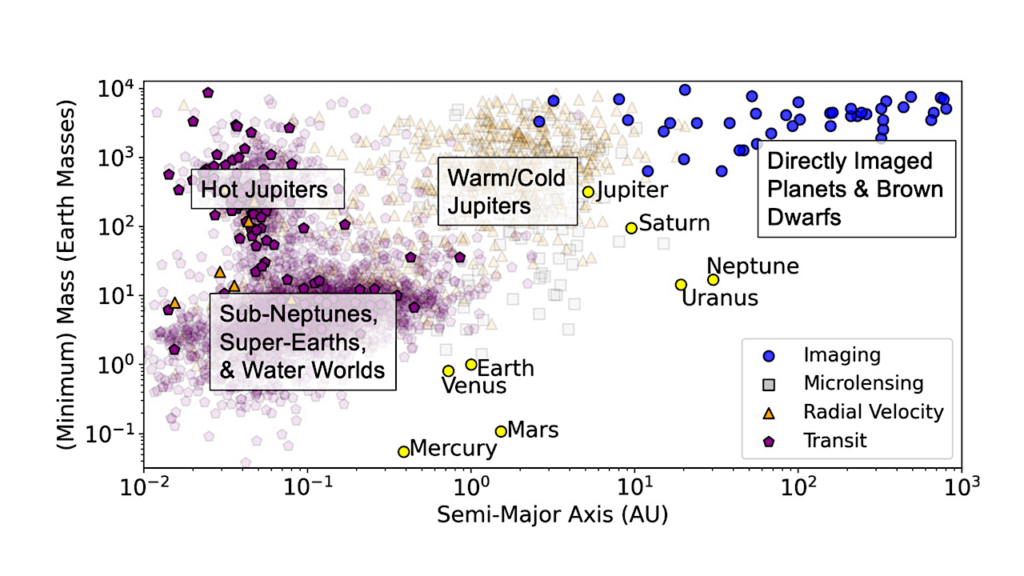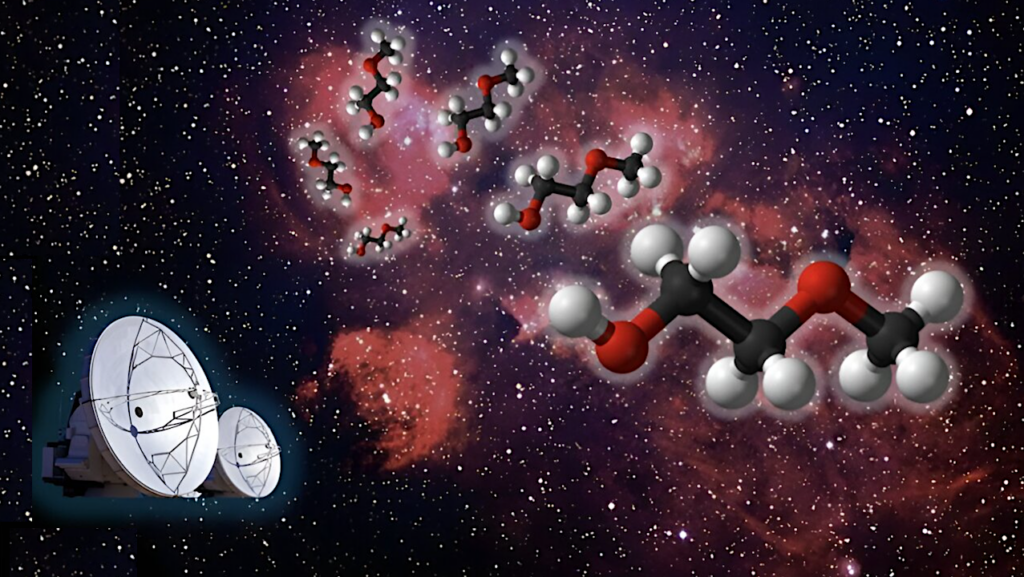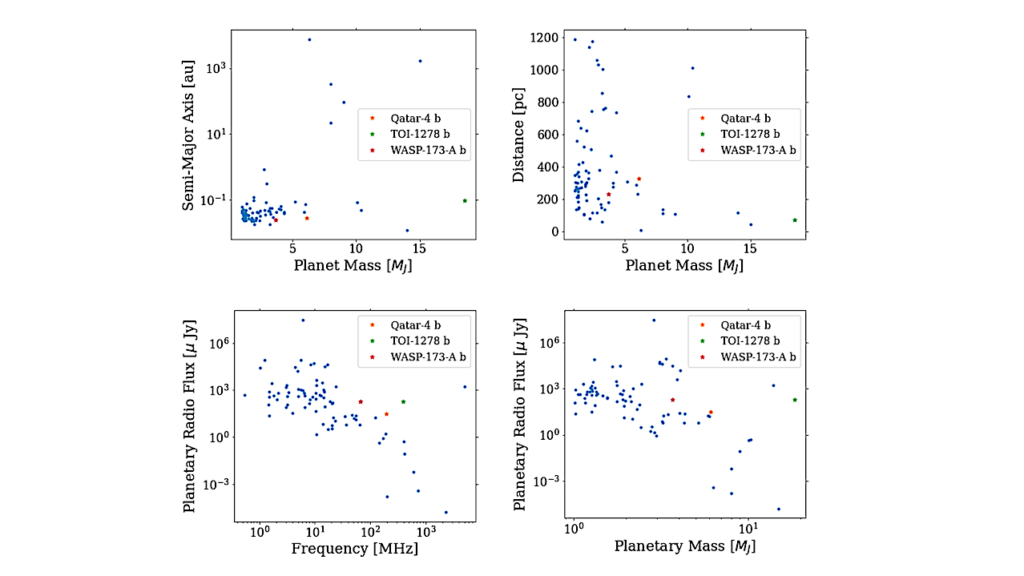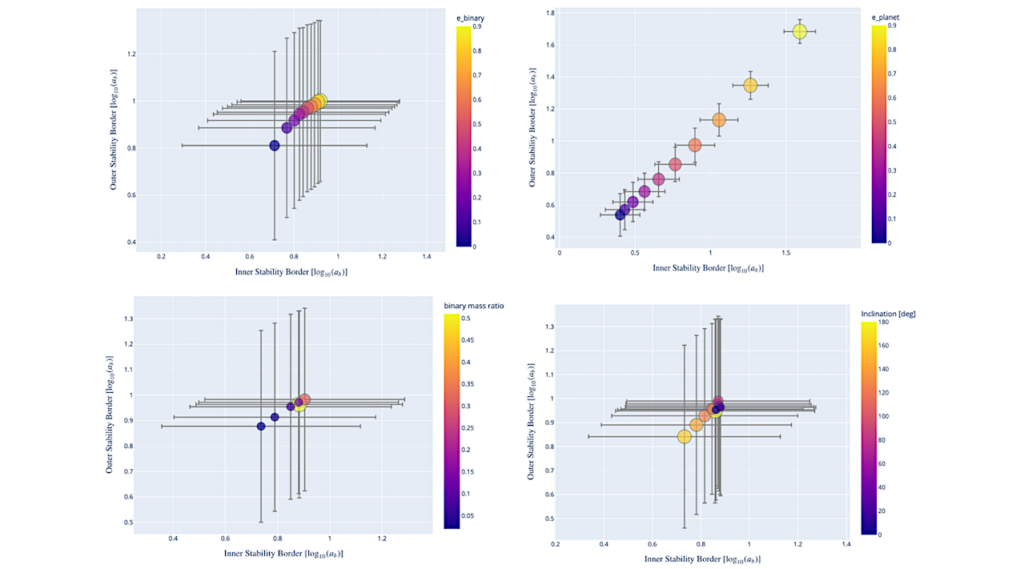A Population Analysis of 20 Exoplanets Observed from the Optical of the Near-infrared Wavelengths with HST: Evidence for Widespread Stellar Contamination
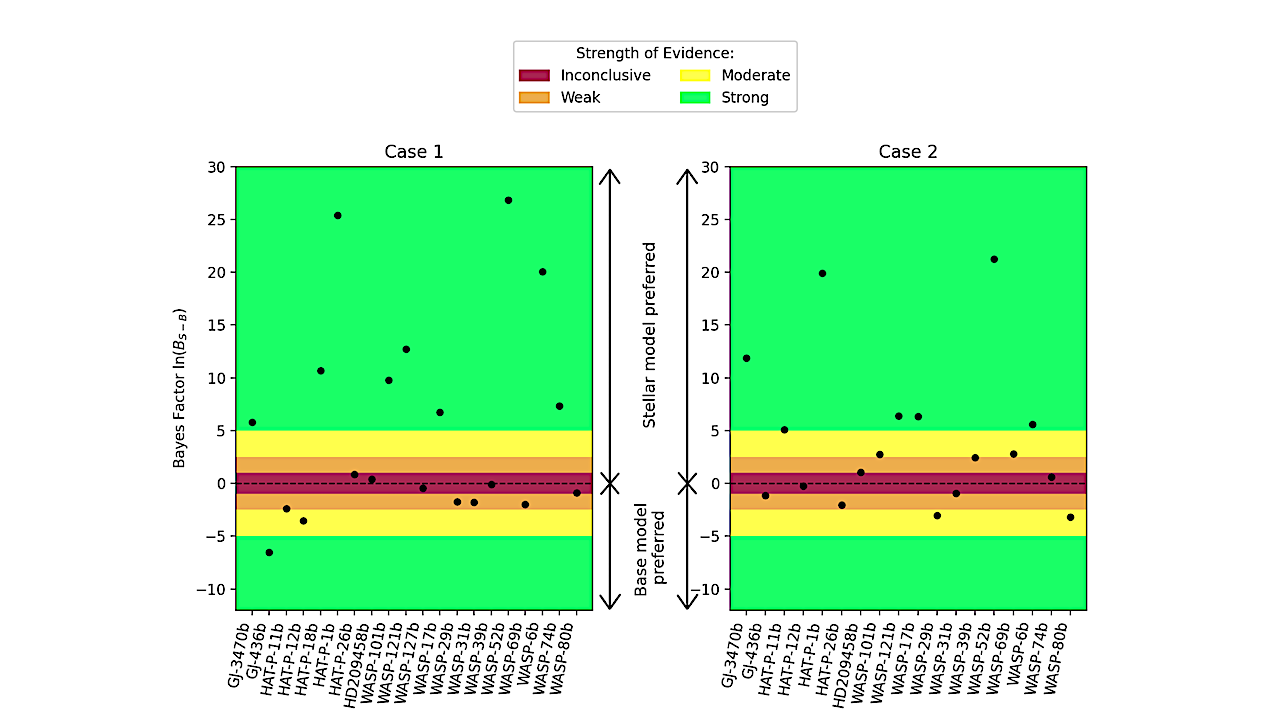
We present a population study of 20 exoplanets, ranging from Neptune-like to inflated hot-Jupiter planets, observed during transit with the STIS and WFC3 instruments aboard the Hubble Space Telescope.
To obtain spectral information from the near-UV to the near-infrared, we reanalysed sixteen WFC3 and over fifty STIS archival data sets with our dedicated HST pipeline. We also include twenty-four WFC3 data sets previously reduced with the same software. Across our target sample we observe significant divergence among multiple observations conducted with the same STIS grating at various epochs, whilst we do not detect variations in the WFC3 data sets.
These results are suggestive of stellar contamination, which we have investigated further using known Bayesian tools and other tailored metrics, facilitating a more objective assessment of stellar activity intensity within each system.
Our findings reveal that stellar activity contaminates up to half of the studied exoplanet atmospheres, albeit at varying extents. Accounting for stellar activity can significantly alter planetary atmospheric parameters like molecular abundances (up to 6 orders of magnitude) and temperature (up to 145 %), contrasting with the results of analyses that neglect activity.
Our results emphasise the importance of considering the effects of stellar contamination in exoplanet transit studies; this issue is particularly true for data sets obtained with facilities that do not cover the optical and/or UV spectral range where the activity is expected to be more impactful but also more easily detectable. Our results also provide a catalogue of potentially active stars for further investigation and monitoring.

The sample of planets and stellar hosts investigated in this study. We defined a Neptune-like planet to have a radius between 0.31 and 0.54 RJ, a Jovian to possess a radius between 0.54 and 1.42 RJ and an inflated Jovian to display an apparent radius at 10 bar of 1.42 RJ < Rp < 2.32 RJ. — astro-ph.EP

The spectral data resulting from our data analysis, colour-coded based on the observation timestamps of each STIS visit. ‘Visit 1’ denotes the first observation in chronological order conducted using the respective STIS grating, followed by ‘Visit 2’ etc.. For HAT-P-1 b, HAT-P-26 b, WASP-17 b, and WASP-39 b, we possess data from both the G102 and G141 grisms on WFC3. These data sets are highlighted to illustrate the corresponding data points and to visualise the overlap between the grisms. Conversely, observations for the remaining planets were exclusively conducted using the G141 grism on the WFC3 instrument. The dashed lines centred at 0.59 µm and 0.77 µm indicate where we expect the peaks of the absorption features of sodium and potassium to appear respectively. — astro-ph.EP
Arianna Saba, Alexandra Thompson, Kai Hou Yip, Sushuang Ma, Angelos Tsiaras, Ahmed Faris Al-Refaie, Giovanna Tinetti
Comments: 68 pages, 18 figures, 25 tables, submitted to ApJS
Subjects: Earth and Planetary Astrophysics (astro-ph.EP)
Cite as: arXiv:2404.15505 [astro-ph.EP] (or arXiv:2404.15505v1 [astro-ph.EP] for this version)
Submission history
From: Arianna Saba
[v1] Tue, 23 Apr 2024 20:41:05 UTC (22,609 KB)
https://arxiv.org/abs/2404.15505
Astrobiology




